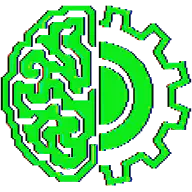SaaS: 0x9#
Overview#
This video, part of the SaaS (Serendipity As A Service) series, initially planned to discuss “engineering perceptions.” However, the host spontaneously pivots, exploring the nature of true serendipity, how they observe patterns in their own rambling, and the idea of engineering or ensuring the quality of serendipitous thought.
Shifting Focus: From Perceptions to Serendipity#
- [00:00:31] The host introduces the initial topic: engineering perceptions. They immediately note a recurring pattern in generating ideas by pivoting between opposing perspectives like “engineering others’ perceptions” versus “engineering your own perception.”
- [00:01:50] This pattern of considering the internal vs. the external fundamentally changes the approach to abstract ideas.
- [00:05:20] Mid-thought, the host observes the spontaneity of changing the topic entirely and decides to pivot the discussion to “What is true serendipity?”. They suggest this act of changing topics spontaneously might be true serendipity.
Exploring True Serendipity#
- [00:08:25] Questions arise about whether planned, lengthy rambles on a single topic constitute serendipity and why they enjoy serendipity. They link it to intellectual “ureka” moments.
- [00:11:05] The difficulty of benchmarking serendipity (similar to wisdom) is discussed, bringing up the concept of offering “Serendipity As A Service” and the challenge of Quality of Service (QoS) assurance.
- [00:13:10] The host describes ways one might feign or engineer serendipity, such as observing abstract patterns (like the internal/external focus) or making connections between disparate domains.
- [00:15:25] Another method is asking difficult questions to oneself, even if the answer isn’t known immediately, and exploring those questions in different directions.
Engineering and Measuring Serendipity#
- [00:17:18] The idea of a metaphorical “serendipity switch” is proposed to indicate whether the host is relying on old thoughts or generating new ones in the moment.
- [00:19:42] The host outlines cognitive “tooling” used for expanding on ideas:
- Zooming in (specializing, details)
- Zooming out (abstract patterns)
- Linking/Connecting domains (evaluation/application)
- Courage (not worrying about sounding foolish)
- [00:21:40] Key Realization: A sixth tool for inducing serendipity is identified: forcing yourself to continue when you’ve run out of known points (enlisting everything and running to the end). The scarcity of known ideas in the moment forces present, serendipitous thought.
- [00:24:00] Another pattern observed is learning vs. realizing; they note how reframing past actions can lead to the realization that serendipity was being implicitly engineered all along.
- [00:27:30] The complex problem of ensuring the quality of serendipity (“How do you know I’m not fooling you?”) is explored. Who is the ultimate judge - the speaker or the audience? Measuring serendipity for groups of people is considered, possibly through feedback mechanisms like voting.
Past Methods and Future Plans#
- [00:31:00] The host recalls a past method for explicitly engineering serendipity: writing down spontaneous ideas on crumpled notes, putting them in a box, and picking one at random to ramble about for a video.
- [00:34:40] They announce plans to return to this crumpled note method for upcoming SaaS videos, aiming for “next level extreme poor stuff” in terms of planning but potentially higher serendipity.
- [00:36:00] The importance of pacing for long-term optimization is mentioned as another concept for future exploration (serendipity switch off).
- [00:37:30] They describe the overall aim of engineering the ramble and documenting patterns found in a cryptograph (a knowledge graph) on their GitHub.
- [00:40:00] A brief mention of a partner, “The Bitmage,” who focuses on the technical “how” side, complementing the host’s more philosophical “why” approach.
Conclusion#
- [00:38:50] The host reflects on the video as breaking some walls, having changed the topic mid-way and wrestling with difficult questions about the genuine nature and quality assurance of true serendipity. They acknowledge the challenge but express excitement for the process. The return to the crumpled note method is presented as a concrete way to actively engineer future serendipitous content.
